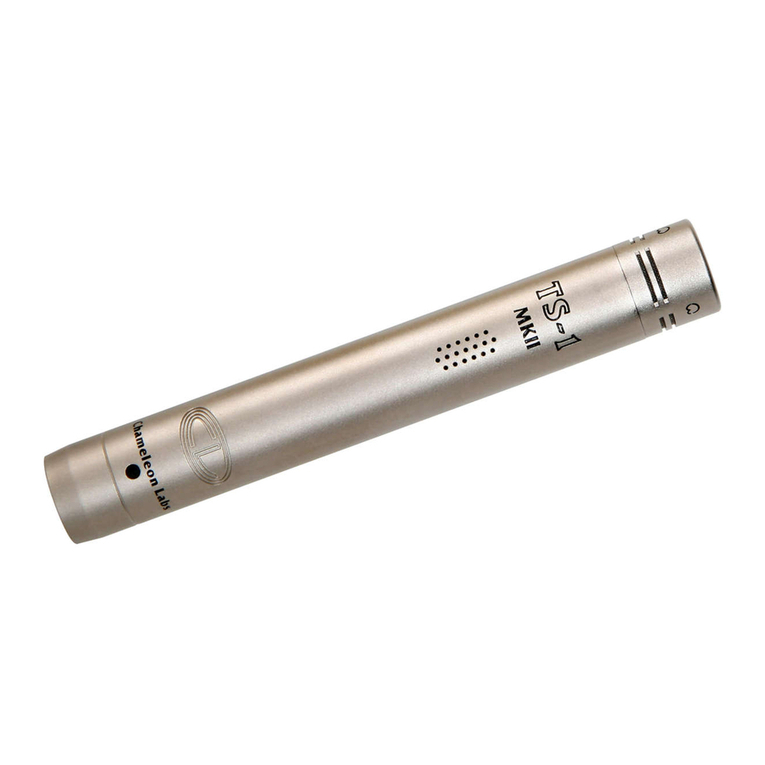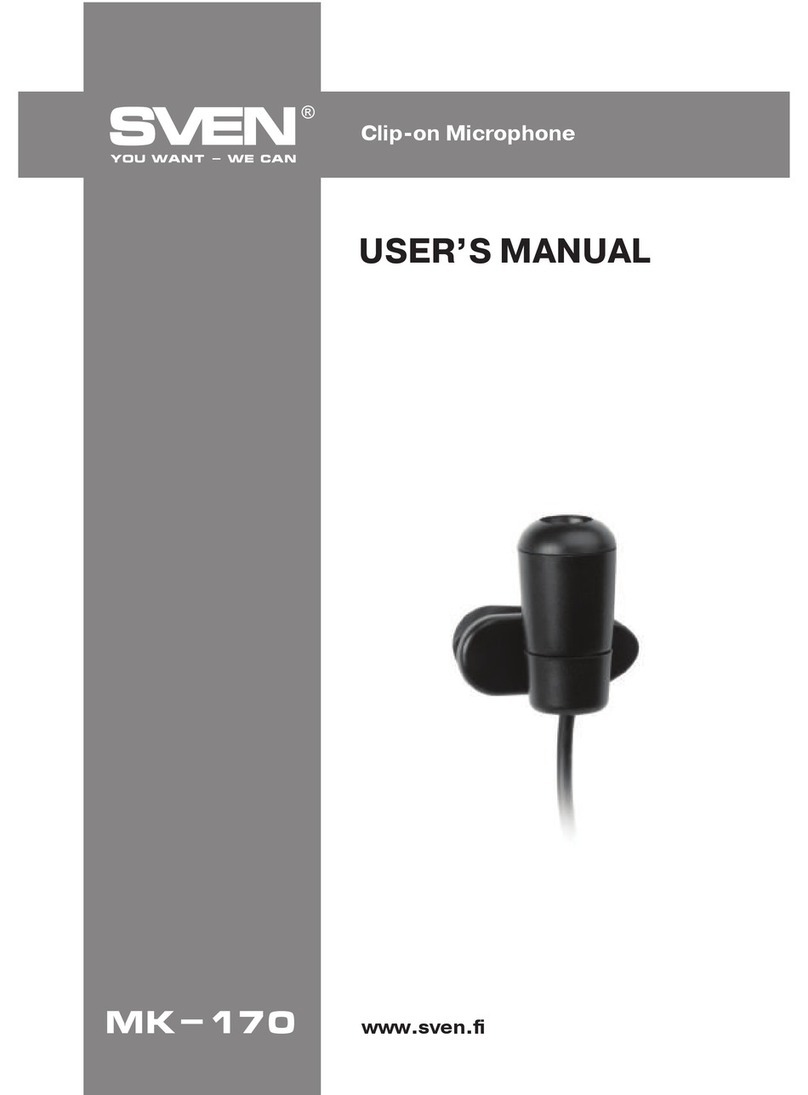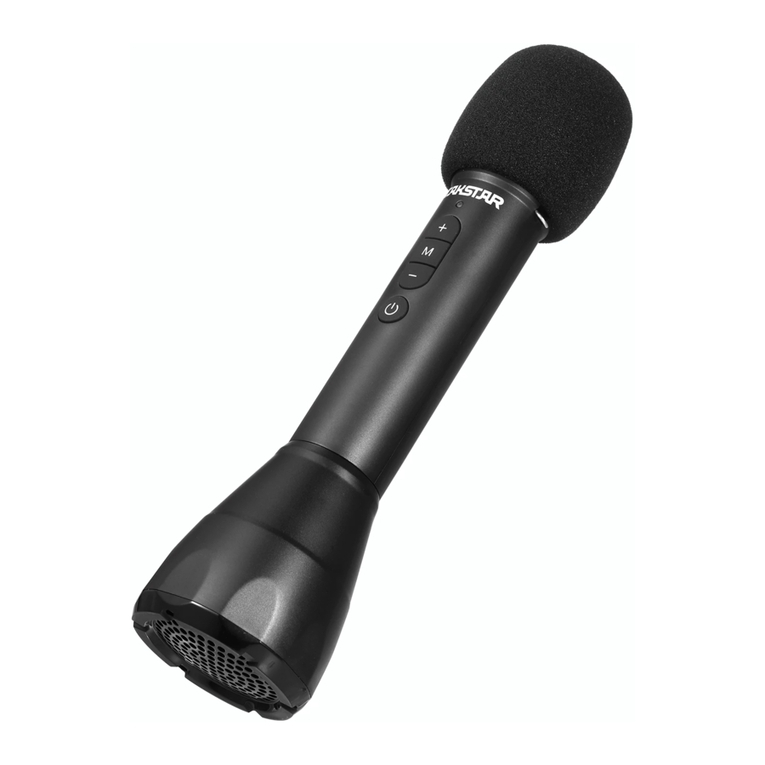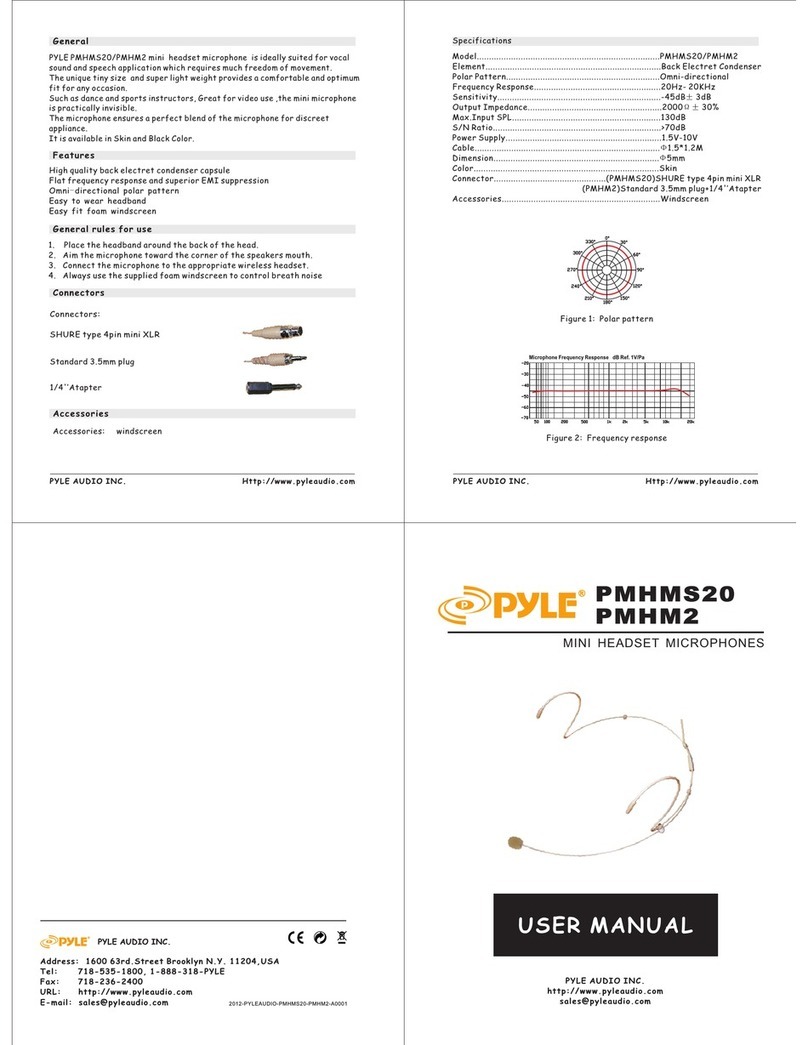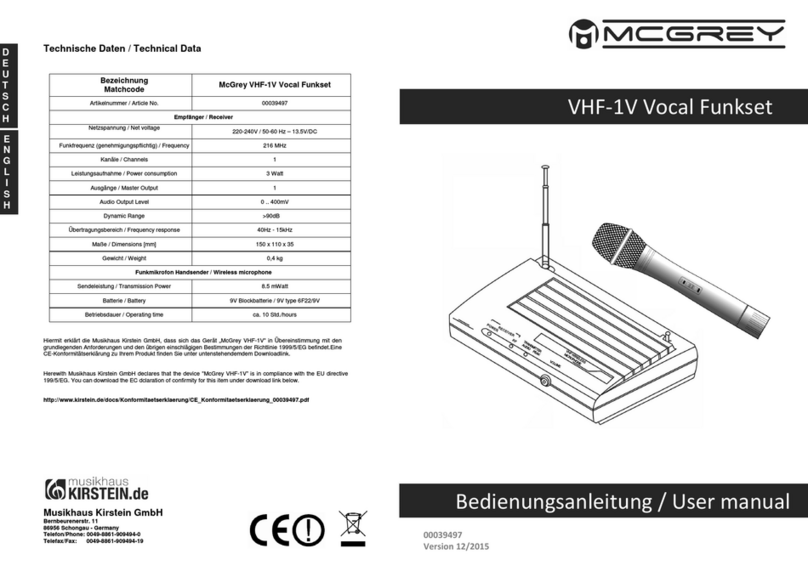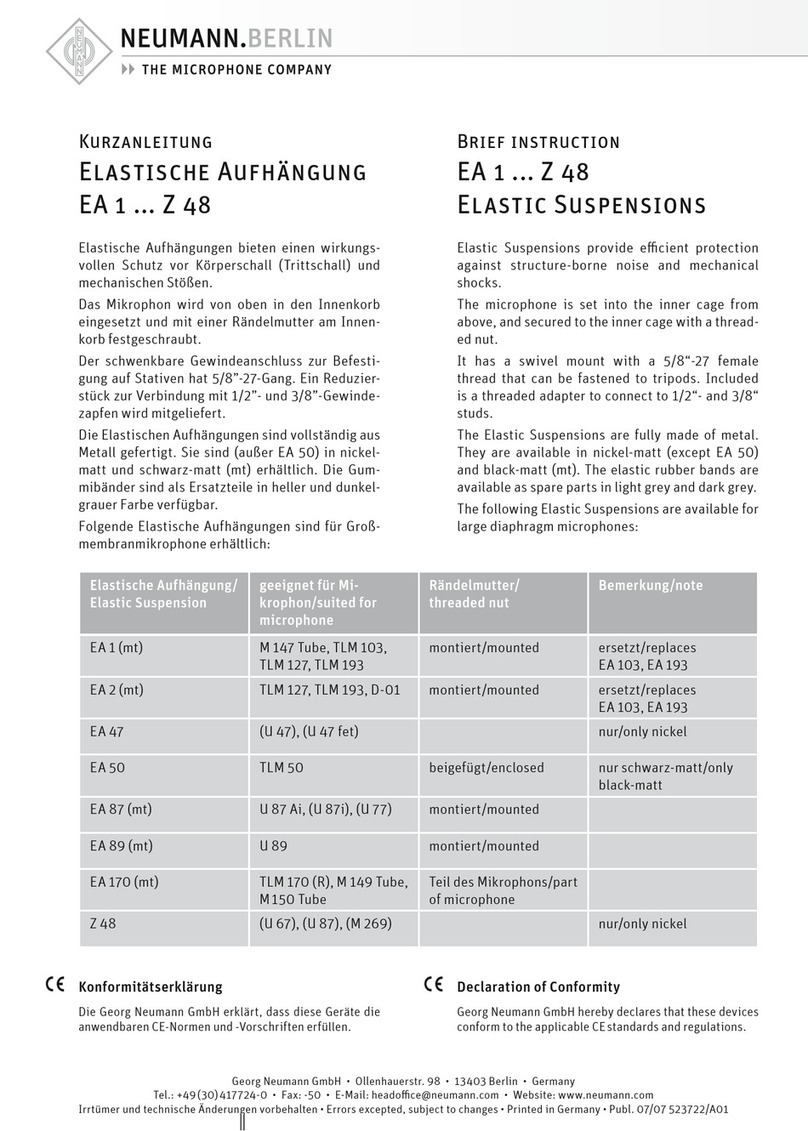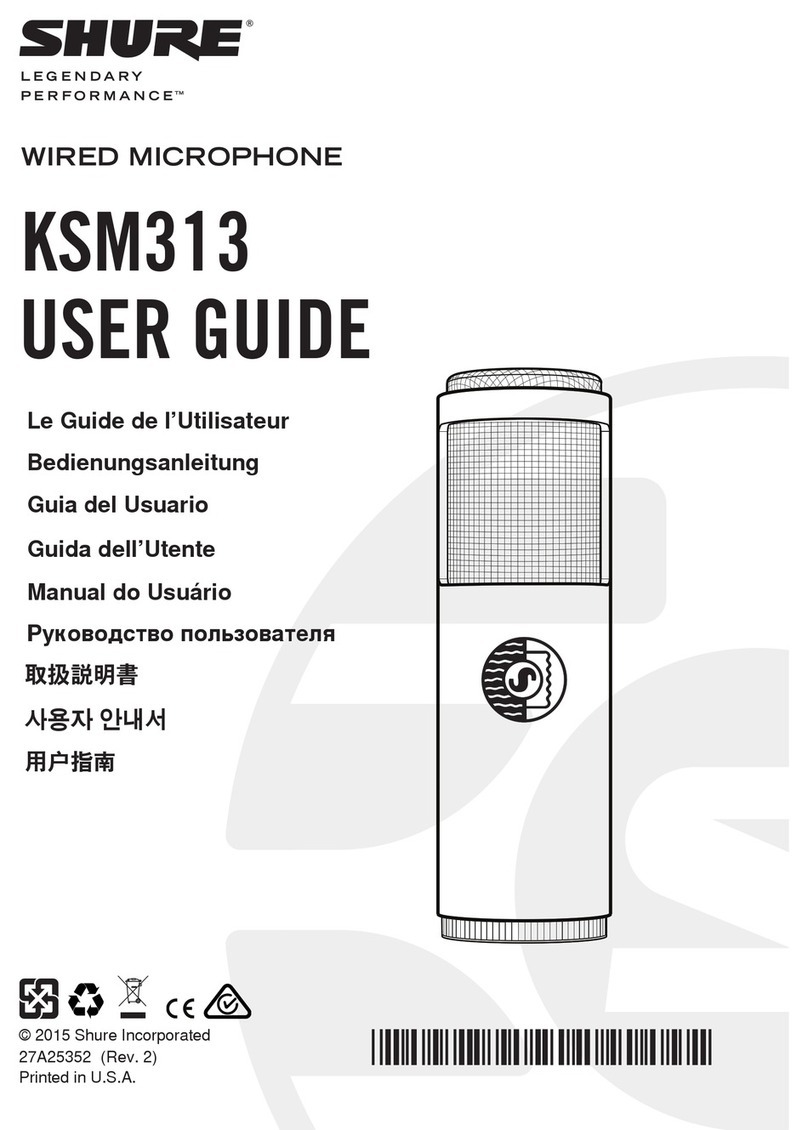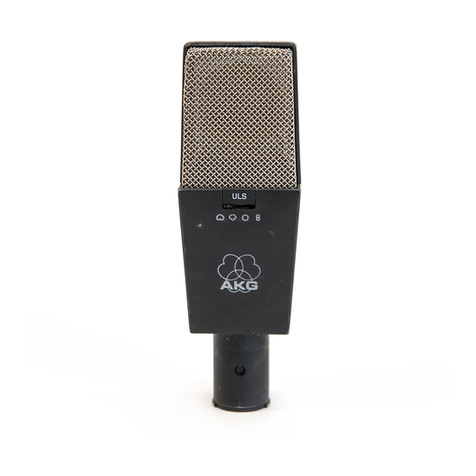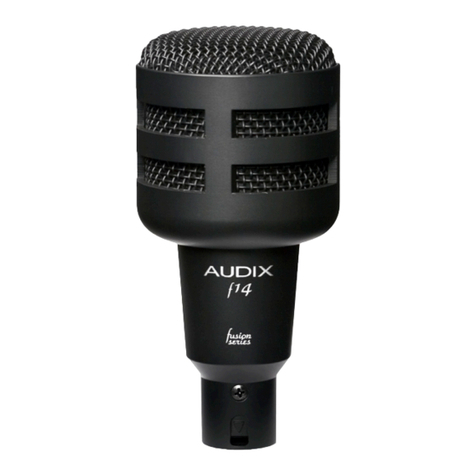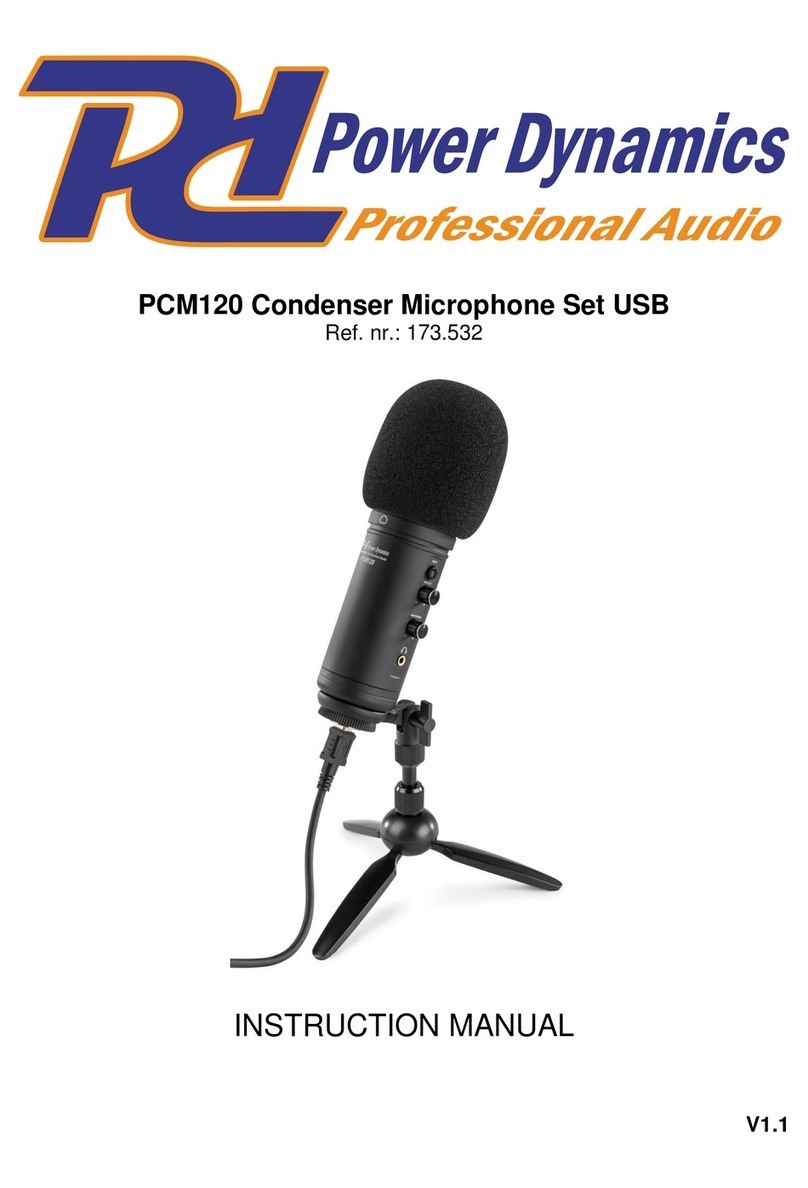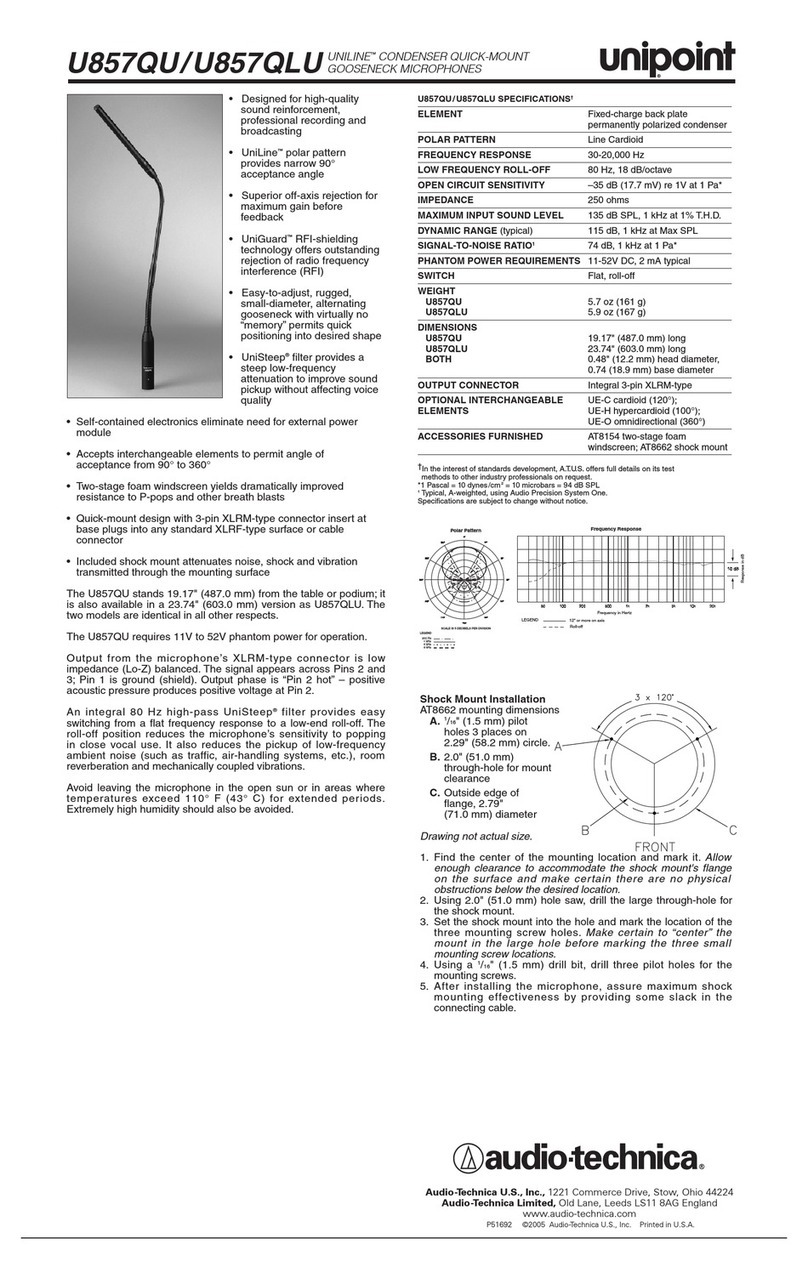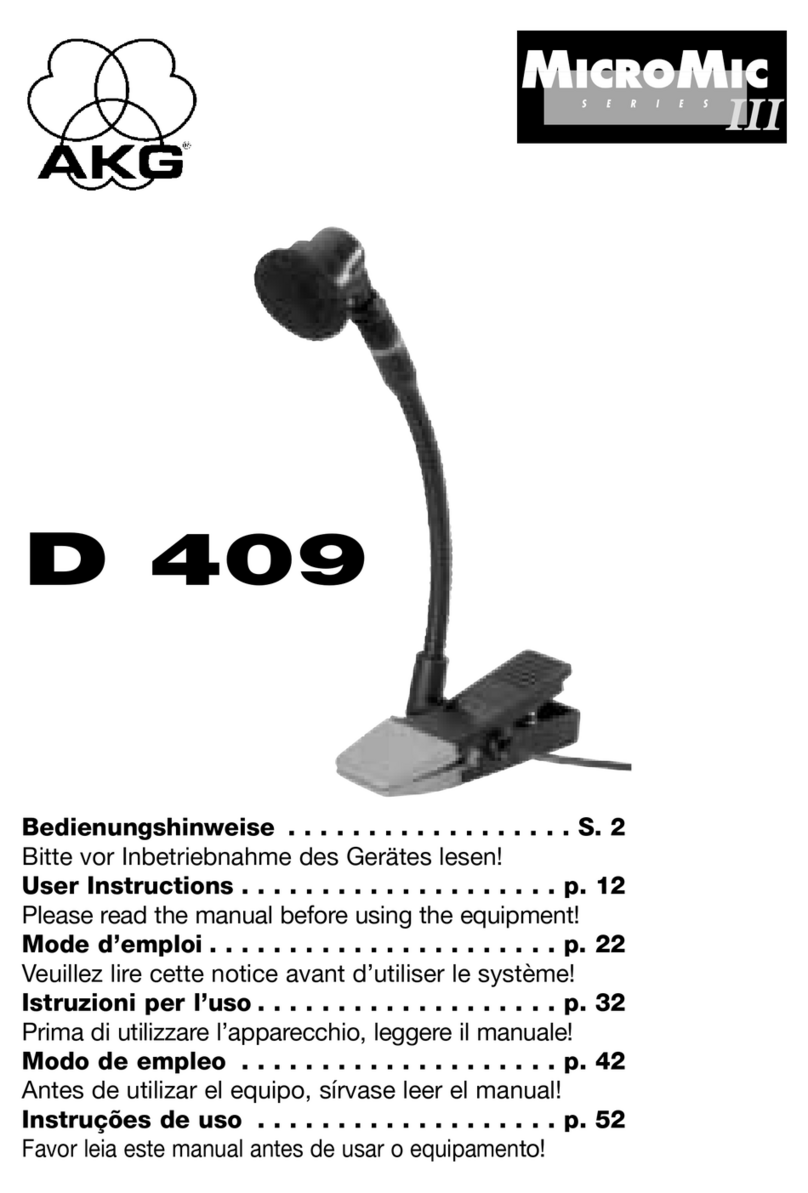Chameleon Labs TS-2 User manual

Chameleon Labs
Model TS-2
Tube Condenser Microphone
Owner’s Manual
704 228th Avenue NE, # 826
Sammamish, WA 98074
206-264-7602
www.chameleonlabs.com
Revision B - September, 2006

2
UNPACKING AND INSPECTION
Carefully unpack your TS-2 vacuum tube microphone and verify that all of the
components included with the microphone are accounted for. Do not discard any packing
materials!
If
anything is missing or damaged, contact your dealer or Chameleon Labs
immediately.
Items included with the TS-2 are:
•TS-2 microphone
•AC operated microphone power supply.
•25-Foot microphone cable with 7-pin male and female connectors
•TS-2 shock mount and European adapter (fitted to shock mount)
•AC power cable for power supply - molded IEC type with plug
•Set of instructions
•Rugged aluminum carrying case for all above items
The TS-2 is a large diaphragm, tube, condenser microphone of exceptional sonic clarity
and rugged construction. When used in accordance with the guidelines in this manual it
will give you many years of outstanding performance. A specially designed, high-quality
output transformer delivers an isolated, truly balanced output signal, minimizing the
possibility of unwanted noise entering the preamplifier.
As an option, the TS-2 can also be ordered, or factory modified to include a hand selected
tube as well as circuit changes to enhance its sonic character for discriminating users.
The TS-2 utilizes a 12AT7 vacuum tube, which necessitates the need of a dedicated
power supply unit (included with the microphone) in order to operate, even if your mixer
has phantom power. If your mixer has phantom power, it is not necessary to switch it off
when using the TS-2. However, due to differences in design of the phantom power
circuits contained in various mixers (and preamps) it is recommended that you defeat the
phantom power as a precautionary measure when it is not needed to power other mics
that you might also be using.
Connections
First, connect the microphone to the power supply using the seven pin cord (included).
An ultra high quality cable is available as an option. Rough handling, misaligned
orientation, or trying to force the connections together too quickly could result in bent or
broken pins. It is recommended that the microphone be placed in the shock mount
(included) to avoid pick up of unwanted vibration. The TS-2 is not intended for hand-
held operation. Next, connect AC power to the power supply using the IEC power cord
(included). "Hot plugging" any vacuum tube microphone can damage the microphone’s
electronics, so always be sure to connect the microphone to the power supply with its
multi-conductor cable before turning the power supply on.
Finally, connect the audio output on the power supply to one of the microphone inputs of
your system using a standard three-pin microphone cable.

3
How to use your TS-2
First, set the red voltage selector switch to match the AC voltage in your area (115/230).
There are two silver toggle switches on the front of the power supply. The POWER
switch is on the left, under the red pilot lamp. The STANDBY switch is on the right,
under the green pilot lamp. After all the proper connections have been made (see section
above), lift the POWER switch. The red pilot will illuminate. This begins heating the
vacuum tube and prepares the microphone to produce a signal. After ten to fifteen
seconds, you can lift the STANDBY switch. The TS-2 will soon begin to output an audio
signal from the 3-pin XLR jack. It requires about five minutes for the microphone to
warm up completely, though a period of fifteen minutes is recommended to assure that
the TS-2 has fully stabilized and has attained its optimum operating temperature. At this
point, the microphone body may feel warm to the touch. This is normal. One of the
features unique to the TS-2 is the ability to adjust the warmth of the microphone. The
warmth adjustment of the microphone is enabled by moving the CAL toggle switch out
of the CAL (calibrated) mode. This will switch on the HEATER VOLTAGE control
located above the CAL switch. Adjustment of the HEATER VOLTAGE control will
allow custom tailoring of the microphone to your exact requirements. A precision meter
will allow you to repeat your custom sonic settings. If you decide to take a break from
using the microphone, you can lower the STANDBY switch until you return. This will
help to extend the life of the vacuum tube. Note: it is not recommended that you leave
the mic in its standby mode (POWER switch up and STANDBY switch down) for
periods longer than thirty minutes. When you are finished using the TS-2, switch it off
and store it in its case. There is no harm in using the microphone for very long periods of
time but do not leave the microphone running continuously. Some people feel that tube
microphones should be left on at all times. This is not true. A vacuum tube has a finite
service life and you will be using it up unnecessarily if you do this.
Application
The TS-2 is a large diaphragm, condenser microphone with vacuum tube electronics. It
features a continuously variable pattern selector which is located on the microphone
body. You may alter the polar pickup pattern of the microphone from omni-directional to
figure eight. The 12 o’clock position is cardioid and is the most commonly used pattern.
To change the pattern, simply rotate the pattern selector knob to customize the
microphones pickup pattern for your specific application. This can be done with the
microphone turned on without causing any damage to the unit. Use the cardioid pattern
in situations where you desire to pickup specific sound sources, such as one guitar within
an ensemble, or only the higher strings of a piano. You can also use the cardioid pattern
when you wish to reduce the acoustic presence of the space in which you are working,
such as reducing crowd noise during live recording. Use the omni-directional pattern
when you wish to pickup a wider area, such as a group of backing vocalists. Also, use
the omni-directional pattern when you wish to include more of the acoustic character of
the space in which the microphone is being used, such as in concert halls that have
outstanding acoustics. The TS-2 can be used in very loud sonic environments without
significant distortion. If you hear distortion from the microphone, engage the “mic pad”
on your mixer, or move the pad selector switch located on the rear of the microphone

4
from the center position to either the -10 or -20 position. You may also move the
microphone farther from the sound source.
Storage
You can optimize the life of your new microphone by storing it properly. Keep the TS-2
in its case when not in use, and store it in a cool, dry place. If you are not going to use
your TS-2 for a long period of time, leave the microphone on for an extra 15 minutes
after you are finished with it. This will drive out moisture that may have accumulated
around the capsule during the session. Place the microphone into a sealable plastic bag
while it is still warm and seal the bag. Keeping a packet of desiccant crystals in the bag
with the TS-2 will also help. If you know that the microphone will be subject to freezing
temperatures, it is very important that it be as dry as possible before it is exposed to the
cold. Use the long-term storage procedure outlined above for both the microphone and
the power supply. Leave the microphone on for 45 minutes prior to placing it and the
power supply into sealable plastic bags. Do this even if the mic will only be exposed to
the cold for a short period of time. It is also important that the microphone be allowed to
return to room temperature WHILE STILL IN THE SEALED PLASTIC BAG. This
stops condensation from forming on the microphone and will greatly increase the
longevity and reliability of the system.
Cleaning
Use a lint free cloth lightly dampened with water to clean the metal surfaces of
microphone system. Never rub anything on the screen that covers the capsules. Make
sure the components are completely dry before being stored.
Maintenance
A spare fuse is included with your TS-2 power supply. It is located in the fuse carrier just
above the AC receptacle. To access the fuse, gently pry out the carrier with a flat bladed
screwdriver. The fuse is mounted in the clip and the spare is located is a small channel
behind the cover. Replace the fuse with the same type as supplied with your microphone.
MAINS VOLTAGE FUSE TYPE
120 Volts AC T500Mal
220 Volts AC T250Mal
There are no user serviceable parts inside the TS-2 microphone or power supply. Contact
a qualified maintenance professional if a problem occurs. This product carries a one-year
warranty.

5
TECHNICAL SPECIFICATIONS
TRANSDUCER TYPE:
Diaphragm: 1-inch diameter, gold sputtered Diaphragm thickness: 3-microns
VACUUM TUBE: 12AT7 - high-frequency twin triode tube
Output impedance: 160 ohms
Sensitivity: -35dB = 17.8mV/Pa
Noise: 18.5dB-A
Maximum Output: 700mV = 126dB SPL
Frequency Response:
20Hz – 20 kHz +/- 4 dB.
DIMENSIONS AND WEIGHT
Carrying case with microphone, power supply, shock mount and cables: 13 lbs.
Microphone: 6 3/4” x 3”, 3 lbs.
Shipping Weight: 14 lbs.
Power Requirements: 115 V.A.C. or 220 V.A.C. at 50Hz/60 Hz.
Power consumption is approximately 5W – (44Ma)

6
WARRANTY AND LIABILITY
Your Chameleon Labs product is warranted to the original owner for a period of one
year. Chameleon Labs guarantees this product to be free from electrical and mechanical
defects and will repair or replace defective components, or replace the microphone at
Chameleon Lab’s option. Should service be required for your Chameleon Labs product,
please contact the manufacturer. Service is provided for products beyond the warranty
period. Seller warrants that the goods are described in this agreement, but no other
express warranty is made in respect to the goods. The entire risk as to the quality and
performance of the good is with the buyer. Seller disclaims all warranties either
expressed or implied, including any implied warranty of merchantability or fitness for a
particular purpose, and seller neither assumes nor authorizes any other person to assume
for it any liability in connection with the sale of said goods.
MODEL NUMBER ___________________________
SERIAL NUMBER ____________________________
DATE OF PURCHASE __________________________
PURCHASED FROM ___________________________
Please visit www.Chameleonlabs.com for the latest updates and technical information.
Table of contents
Other Chameleon Labs Microphone manuals
